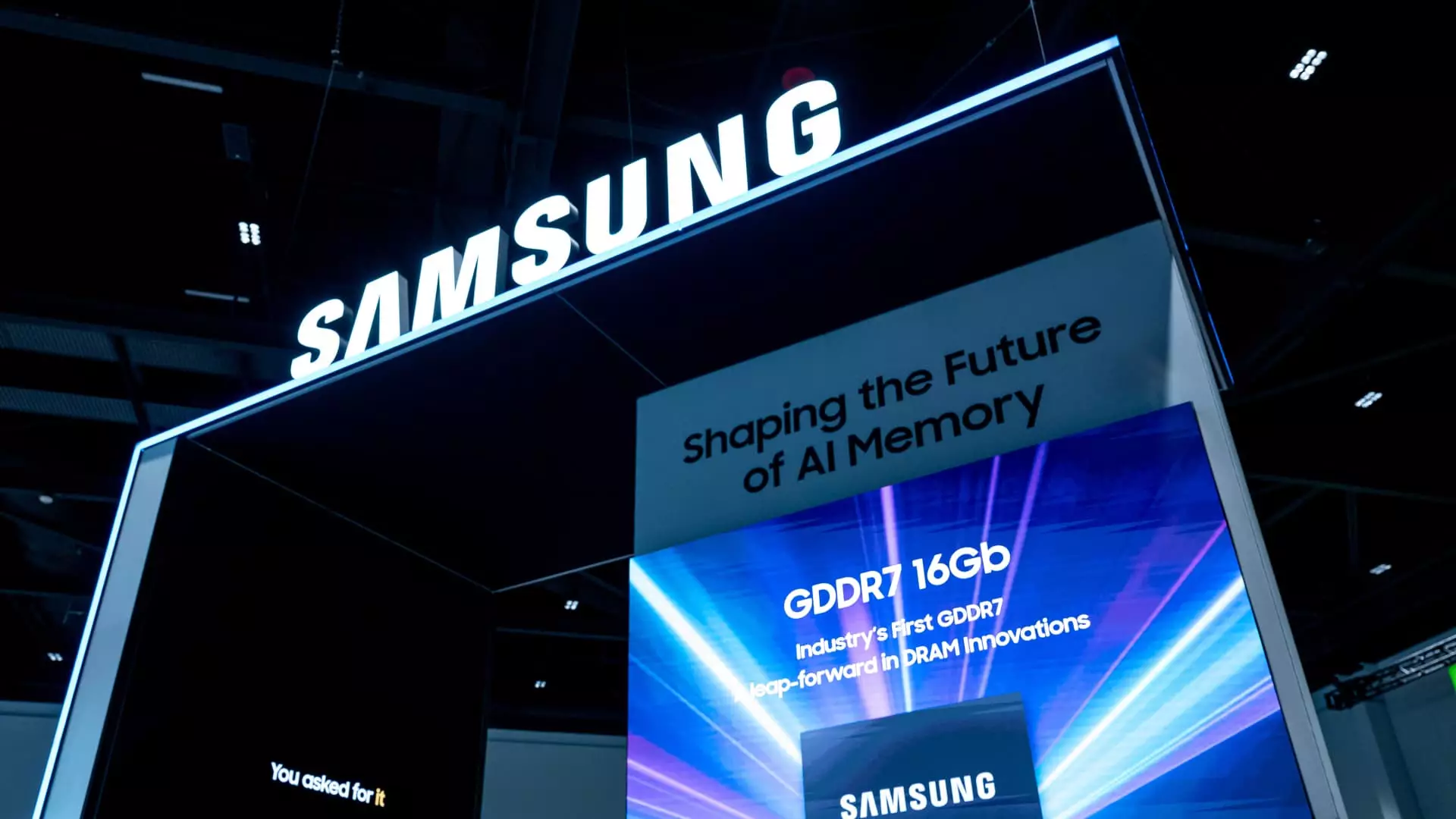Samsung Electronics, a titan of the global tech industry, has encountered a stark reality in its latest financial outlook. With a projected 56% decline in operating profit for the second quarter, the company faces a sobering reminder of how volatile and competitive the semiconductor and smartphone markets have become. This downturn, from an impressive 10.44 trillion Korean won to an estimated 4.6 trillion, is a clear signal that even industry leaders are vulnerable amidst rapid technological shifts and geopolitical uncertainties. While Samsung remains a formidable name, the recent forecast underscores its vulnerabilities—particularly in high-stakes segments like AI chips and high-bandwidth memory (HBM).
What’s particularly striking is the extent of the decline compared to analyst expectations. The market anticipated a somewhat soft decline to around 6.26 trillion won, yet Samsung’s own guidance indicates a deeper erosion of profits. This discrepancy emphasizes the complexity of forecasting in a landscape riddled with supply chain disruptions, geopolitical restrictions, and fierce rivalry. Such factors have collectively eroded what once seemed a steady trajectory of growth, exposing the fragility of even entrenched tech giants.
Industry Struggles: The Battle for AI Chip Dominance
One major challenge Samsung faces stems from its lag in capturing demand for sophisticated AI chips. Nvidia, as the undisputed leader in this niche, has set the bar high, leaving competitors scrambling to catch up. Samsung’s attempts to upgrade its high-bandwidth memory products—crucial in AI applications—have faced delays and certification hurdles, further hampering its competitive edge. While Samsung works on getting its latest HBM chips approved by Nvidia, reports suggest that these plans won’t bear fruit until at least September. This delay in qualification means that Samsung’s ability to capitalize on the booming AI hardware market remains subdued at best.
The importance of Nvidia’s dominance cannot be overstated. With roughly 70% of global HBM demand tied to Nvidia, Samsung’s failure to quickly commercialize its most advanced HBM offerings effectively caps its growth potential. Meanwhile, SK Hynix, Samsung’s main rival in high-performance memory, has cemented itself as Nvidia’s primary HBM supplier, intensifying competition in this critical segment. It’s a classic case of the industry’s winners and losers being decided by speed, innovation, and strategic partnerships—not just product quality.
Structural and Geopolitical Headwinds Dampening Growth
Beyond product development delays and fierce competition, broader industry pressures have contributed to Samsung’s earnings woes. The company cited inventory adjustments and U.S. restrictions on advanced AI chip exports to China as factors suppressing profits. These restrictions are part of a global political landscape that often feels like a game of geopolitical chess, with tech companies caught in the crossfire. The U.S. clamps down on exports of cutting-edge AI chips, thereby limiting Samsung’s access to critical markets and technological ecosystems. Such trade restrictions destabilize the company’s supply chain and reduce its ability to respond swiftly to emerging demand.
Additionally, Samsung’s foundry business—its manufacturing backbone—continues to face weak order flow and stiff competition from Taiwan Semiconductor Manufacturing Company (TSMC). TSMC’s superior technological edge and scale have allowed it to dominate the high-end manufacturing space, leaving Samsung in a difficult position. Reports of staff cuts and internal restructuring suggest that the company is attempting to recalibrate its strategy, but internal reforms can only do so much when external headwinds remain strong.
The Road to Recovery: Challenges and Opportunities
Despite the gloomy near-term outlook, Samsung’s resilience should not be underestimated. The company’s stock has appreciated over 16% year-to-date, indicating investor confidence in its long-term potential. The upcoming third-quarter report will shed more light on whether Samsung can stem the bleeding and rekindle growth. Success will hinge on overcoming persistent delays in product qualification, navigating geopolitical restrictions, and outmaneuvering rivals like SK Hynix and TSMC.
Moreover, Samsung’s future hinges on its ability to innovate rapidly and forge strategic partnerships. Securing certification for its latest HBM chips with Nvidia, expanding supply agreements with AMD, and accelerating the ramp-up of its foundry operations could provide the catalyst needed to reverse this downturn. However, these paths are fraught with risks; technological delays, shifting geopolitical landscapes, and relentless competition pose continual threats.
In the end, Samsung’s current predicament is a stark reminder of how rapidly the semiconductor landscape is evolving. Leadership will require bold decisions, agile strategies, and perhaps a dose of good fortune to reclaim growth momentum. The coming months will be crucial in determining whether Samsung can transform these setbacks into opportunities or if they signal a deeper, industry-wide slowdown.


Leave a Reply